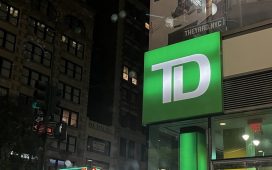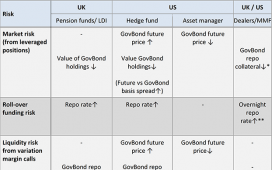Unlock the Editor’s Digest for free
Roula Khalaf, Editor of the FT, selects her favourite stories in this weekly newsletter.
Bond investors have ruled that banks’ 4Q results were decent enough to open up the market (for now).
Sure, there have concerns about the “last mile” of inflation control — the CME’s Fedwatch tool is pricing in ~125bp of cuts this year, down from 150bp last week. And the outlook for profitability isn’t stellar, as mainFT reports that bank execs say deposit costs will keep rising.
But the Federal Reserve’s policy rate isn’t expected to rise more this year. That provides an upper limit for how far deposit costs can rise, and provides some relief for lingering worries about the unrealised losses in the bond portfolios of Bank of America and JPMorgan. Plus, US economic fundamentals seem stable enough that nobody’s panicking about bank creditworthiness at the moment.
So January’s usual flurry of bank-bond sales (following 4Q results) has been more of a blizzard this year. Bond investors were not only willing to tolerate much more issuance than last year’s “measly” $7bn, says CreditSights, but also they were able to absorb a near-record volume:

And bond pricing indicated solid demand as well:

To be clear, banks’ shares make it obvious that this isn’t a story of optimism about US banks’ performance. The SPDR S&P Bank ETF has already lost 1.5 per cent this year, while the S&P 500 has climbed by nearly the same amount.
CreditSights is bullish on bank debt, but still includes some caveats in a Sunday note (with our emphasis):
. . . we think there was a degree of pull-forward and opportunism from the banks, predicated on the strength of the primary market . . . Strong secondary performance underscores the investor demand support . . . That said, the bigger compression opportunities looked more concentrated in the initial wave of supply: by the time Bank of America, Citizens and US Bancorp tapped the market on Thursday, pricing had already run in and eliminated much of the concession/compression upside.
Demand for bank bonds was also especially strong at the long end, as analyst Jesse Rosenthal pointed out in his note.
Lest we forget (lol we know you will never forget), long-duration bonds’ performance is most sensitive to changes in rates, so if a recession were to force the Fed to ease aggressively this year and try to push investors into longer-duration and riskier assets, those bonds would fare quite well.
So, bank profitability still isn’t great, but the environment isn’t bad enough for bond investors to go on a buyers’ strike. That’s . . . good news? Maybe?




